
As we approached Vellore Fort, we were struck by the imposing walls that surrounded the massive fortress. Located in the heart of the city of Vellore in Tamil Nadu, India, the fort is a testament to the architectural and engineering skills of the ancient rulers who built it.

Before entering into the fort, we took a small stop for breakfast and had one of the best vada during our road-trip to Rameshwaram from Noida. May be I am saying best because this was first time during the roadtrip, we were having breakfast a local shop and hence the experience was also quite good. and suddenly you also get lot of attention when people get to know that you drove down from Noida/Delhi and going to Rameshwaram.

As I entered the fort, I was transported back in time to a bygone era. The fort has a rich history that dates back to the 16th century, when it was built by the Vijayanagara Empire. Over the centuries, the fort has been occupied by various rulers, including the Marathas, the Mughals, and the British.

As we explored the fort, I was amazed by the intricate carvings and designs on the walls and ceilings. The fort is home to several temples, mosques, and palaces, each with its own unique architectural style and design.
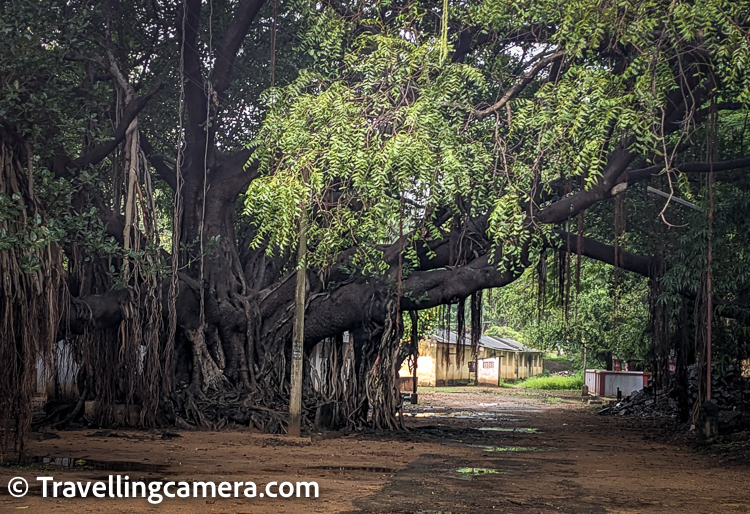
One of the highlights of my visit was the Jalakandeswarar Temple, which is located within the fort. The temple is dedicated to Lord Shiva and features intricate carvings and sculptures that are a testament to the skill and craftsmanship of the ancient artisans who built it.

Another highlight of my visit was the museum within the fort, which houses a collection of artifacts and exhibits that showcase the history and culture of the area. The museum contains a wide range of items, including weapons, coins, and pottery.
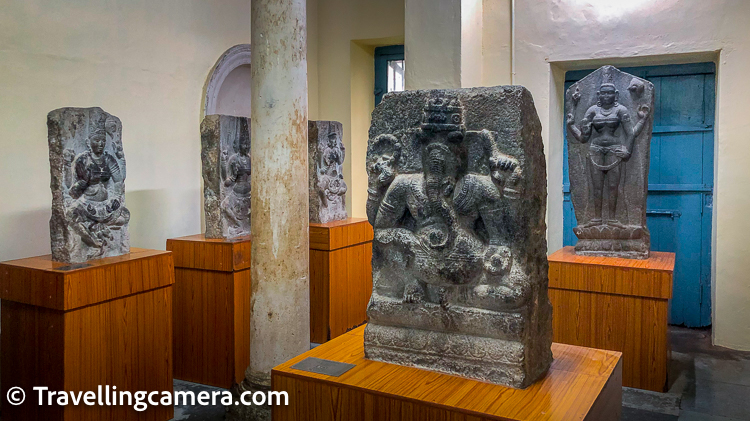
The different architectural styles found in Vellore Fort reflect the fort's rich and diverse history, as it has been occupied by various rulers over the centuries. The fort was initially built by the Vijayanagara Empire in the 16th century, and over time, it was occupied by the Marathas, the Mughals, and the British. Each of these rulers left their mark on the fort, and the different architectural styles found within the fort reflect these influences.

For example, the Jalakandeswarar Temple within the fort features a Dravidian-style architecture, which is typical of South India. This style is characterized by intricate carvings and ornate temples that are dedicated to Hindu deities.
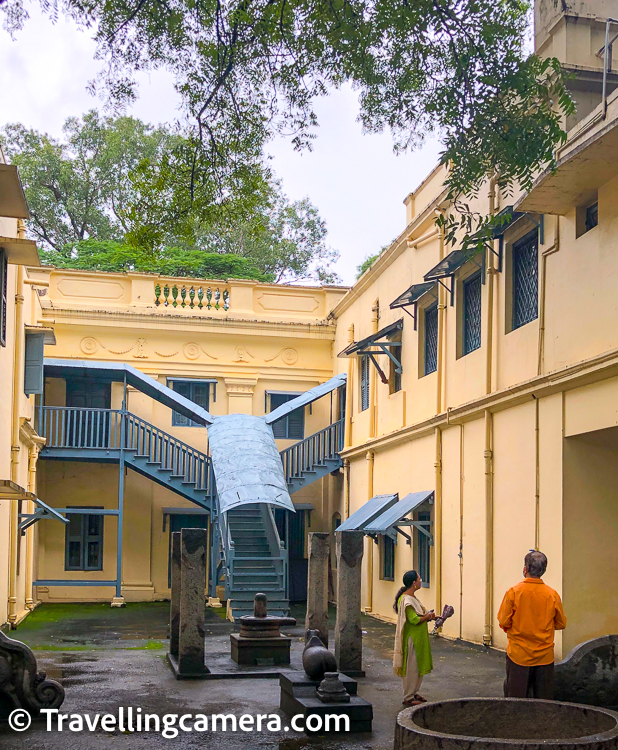
The mosque within the fort, on the other hand, features a Mughal-style architecture, which is characterized by domes and arches. The mosque was likely built during the time of the Mughal occupation of the fort.
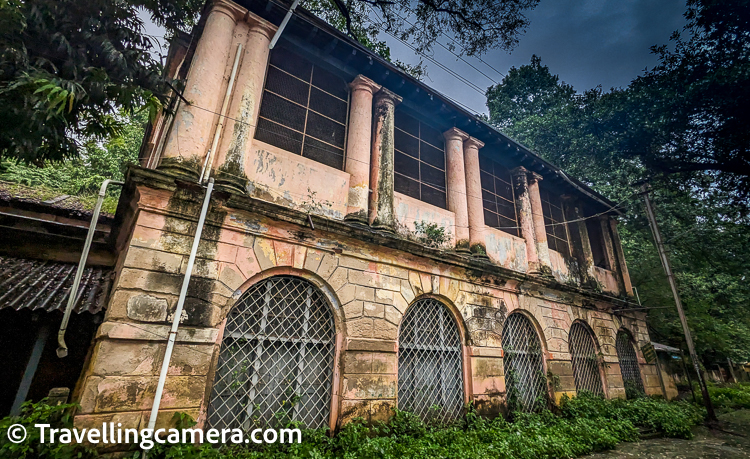
The palaces within the fort feature a mix of architectural styles, including British and Indian architectural elements. These palaces were likely built during the British occupation of the fort and reflect the influence of British colonial architecture.

As I made my way around the fort, I couldn't help but marvel at the sheer size and scale of the structure. The fort is spread over a vast area, and it can take several hours to explore all of its nooks and crannies.

There are several other places to explore in Vellore apart from Vellore Fort. Here are some of the popular ones:
Sri Lakshmi Narsimha Swamy Temple: Located about 12 km from Vellore, Sri Lakshmi Narsimha Swamy Temple is a popular pilgrimage site dedicated to Lord Narasimha, an avatar of Lord Vishnu. The temple is known for its intricate carvings and beautiful architecture.
Golden Temple (Sripuram): Located about 8 km from Vellore, the Golden Temple is a stunning temple covered in gold leaf. The temple is dedicated to the goddess Mahalakshmi and is a popular destination for spiritual seekers and tourists alike.
Amirthi Zoological Park: Located about 25 km from Vellore, Amirthi Zoological Park is a popular destination for families and nature lovers. The park is home to a wide range of animals and birds, including deer, peacocks, and monkeys.
Yelagiri Hills: Located about 75 km from Vellore, Yelagiri Hills is a popular hill station that offers breathtaking views of the surrounding landscape. The hills are a great place for trekking, hiking, and nature walks. During winters the temperature ranges from 12°C to 25°C, making it ideal for outdoor activities like trekking, hiking, and camping. The winter months also offer clear skies and stunning views of the surrounding hills and valleys. The monsoon season, from June to September, can also be a good time to visit Yelagiri Hills, as the hills are covered with lush greenery and waterfalls. However, it is important to note that the monsoon season can also bring heavy rainfall and landslides, which can disrupt travel plans. The summer months, from March to May, can be hot and humid, with temperatures ranging from 20°C to 35°C. If you visit during this time, it's important to stay hydrated and take precautions to avoid heatstroke.
Vainu Bappu Observatory: Located on the outskirts of Vellore, the Vainu Bappu Observatory is a must-visit for astronomy enthusiasts. The observatory houses several telescopes and provides a fascinating glimpse into the mysteries of the universe.
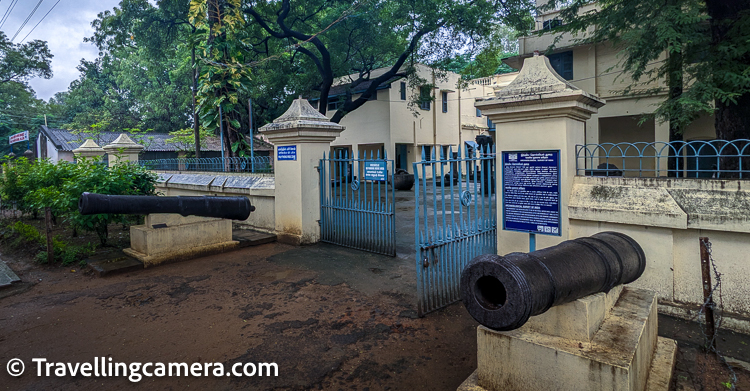
Vellore Fort is known for its collection of canons, which are displayed in various parts of the fort. These canons were used by the various rulers who occupied the fort over the centuries, including the Vijayanagara Empire, the Marathas, the Mughals, and the British.
One of the most impressive canons at Vellore Fort is the Ranganatha Canon, which is believed to be the largest canon in Asia. This massive canon weighs over 25 tons and is 14 feet long. It was used by the British during the 1800s and played a key role in the fort's defense.
Another notable canon at Vellore Fort is the Krishna Canon, which is named after Lord Krishna. This canon is decorated with intricate carvings and is believed to be over 400 years old. It was used by the Vijayanagara Empire during their occupation of the fort.
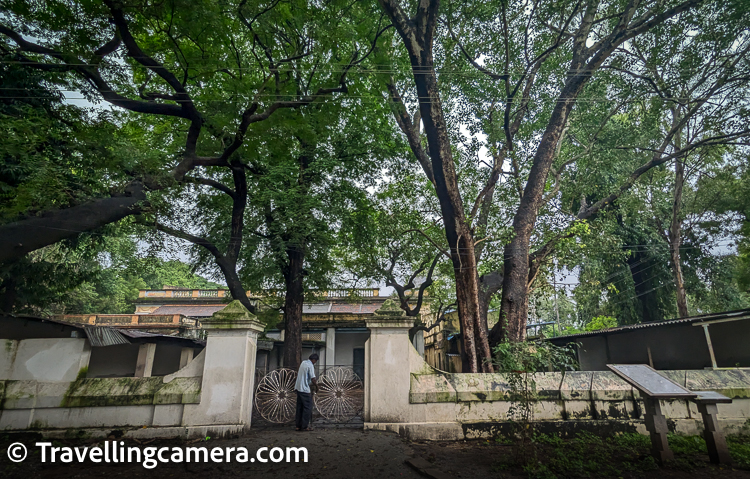
Apart from the canons, Vellore Fort has several other historical artifacts on display. Here are some of the notable ones:
Stone Inscriptions: Vellore Fort is home to several stone inscriptions that date back to the Vijayanagara Empire. These inscriptions provide valuable insights into the history and culture of the region and are a testament to the skill and craftsmanship of the ancient artisans who created them.
Paintings and Murals: The walls of Vellore Fort are adorned with several paintings and murals that depict scenes from Hindu mythology and ancient Indian history. These paintings provide a glimpse into the artistic and cultural traditions of the region.
Coins and Pottery: The museum within Vellore Fort houses a collection of coins and pottery that date back to the Vijayanagara Empire and the British occupation of the fort. These artifacts offer a fascinating insight into the economic and cultural practices of the time.
Weapons: Vellore Fort is home to a collection of weapons, including swords, spears, and guns, that were used by the various rulers who occupied the fort over the centuries. These weapons are a reminder of the fort's strategic importance as a military stronghold.
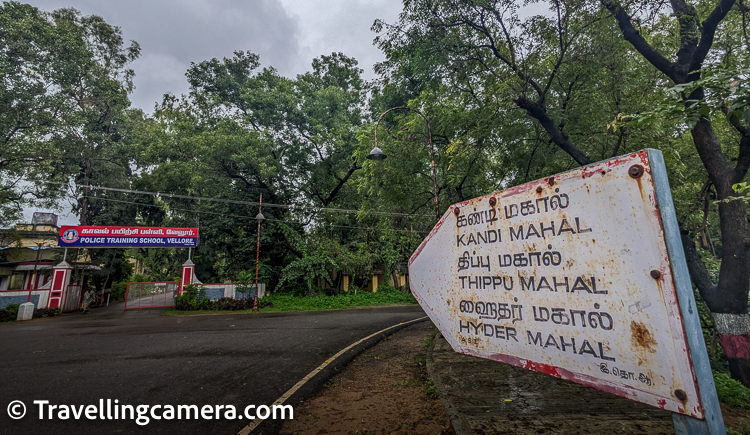
Thippu Mahal, also known as the Tipu Sultan Palace, was built by Tipu Sultan in the 18th century as his summer residence. The palace is located within the premises of Vellore Fort and is known for its beautiful architecture and intricate carvings.
However, in the 1800s, the British captured the fort and used the palace as a barracks for their soldiers. After India gained independence, the palace was declared a protected monument and was opened to the public as a museum.
However, in 1981, the Tamil Nadu Police Department took over the palace and converted it into their headquarters. As a result, the palace is not accessible to visitors.
It is unfortunate that this important historical landmark is currently not accessible, but the decision to use it as the police headquarters was made by the government. It is possible that in the future, the palace may be returned to its original use as a museum, but for now, it remains closed to the public.

Vellore Fort is home to several sculptures that are a testament to the skill and craftsmanship of the ancient artisans who built them. Here are some of the notable sculptures at Vellore Fort:
Gajalakshmi: The Gajalakshmi sculpture is a popular attraction at Vellore Fort. It depicts the Hindu goddess Lakshmi, who is the goddess of wealth and prosperity, sitting on a lotus flower with two elephants on either side. The sculpture is believed to be over 400 years old and is a stunning example of South Indian sculpture.
Narasimha Avatar: The Narasimha Avatar sculpture is a depiction of Lord Vishnu's fourth avatar, in which he appears as a half-man, half-lion. The sculpture is located within the Jalakandeswarar Temple at Vellore Fort and is known for its intricate carvings and stunning details.
Durga Mahishasuramardini: The Durga Mahishasuramardini sculpture is a depiction of the Hindu goddess Durga, who is known for her victory over the demon Mahishasura. The sculpture is located within the temple complex at Vellore Fort and is a stunning example of Indian sculpture.
Hanuman: The Hanuman sculpture is a depiction of the Hindu god Hanuman, who is known for his strength and devotion to Lord Rama. The sculpture is located within the temple complex at Vellore Fort and is a popular attraction for visitors.
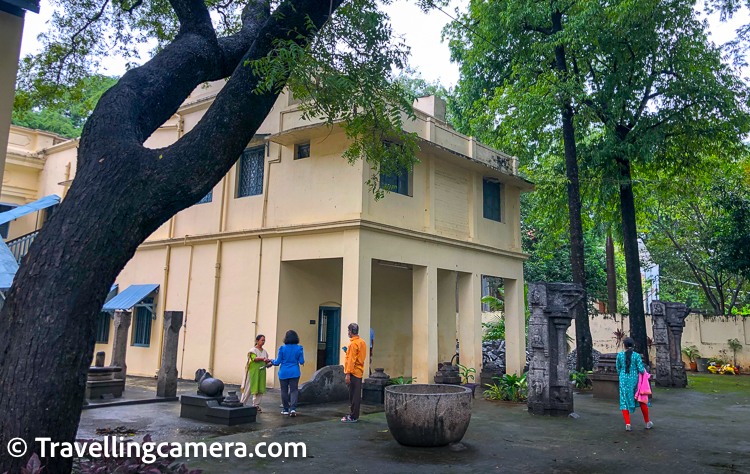
My visit to Vellore Fort was a truly unforgettable experience. It was a chance to step back in time and explore the rich history and culture of the region. If you ever find yourself in Vellore, I highly recommend a visit to this magnificent fortress.

 Delhi to Bhopal Road Trip - The very first day of our 14 days long trip through east coast of India || Noida to Rameshwaram
Delhi to Bhopal Road Trip - The very first day of our 14 days long trip through east coast of India || Noida to Rameshwaram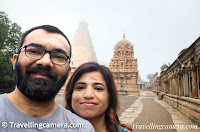 The Majestic Brihadeeshwara Temple: A Glimpse into the Architectural Brilliance of Thanjavur in Tamilnadu, India
The Majestic Brihadeeshwara Temple: A Glimpse into the Architectural Brilliance of Thanjavur in Tamilnadu, India Unlocking the Treasures of Saraswati Mahal Library in Thanjavur, Tamilnadu || Exploring India's oldest and most fascinating collection of manuscripts
Unlocking the Treasures of Saraswati Mahal Library in Thanjavur, Tamilnadu || Exploring India's oldest and most fascinating collection of manuscripts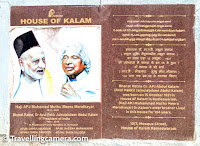 Exploring the Legacy of Dr. APJ Abdul Kalam at House of Kalam: A Journey through His Life and Achievements
Exploring the Legacy of Dr. APJ Abdul Kalam at House of Kalam: A Journey through His Life and Achievements Hotel Gokulam and Golden Minerva Coffee Cafe in Madanapalle, Andhra Pradesh, India || The town that provided us great food and a comfortable night stay
Hotel Gokulam and Golden Minerva Coffee Cafe in Madanapalle, Andhra Pradesh, India || The town that provided us great food and a comfortable night stay Exploring the Architectural Marvels and Historical Significance of Arulmigu Ramanathaswamy Temple in Rameshwaram, Tamilnadu : A Spiritual Journey Through Time
Exploring the Architectural Marvels and Historical Significance of Arulmigu Ramanathaswamy Temple in Rameshwaram, Tamilnadu : A Spiritual Journey Through Time Embracing the Serenity of Sunrise: Exploring Dhanushkodi in the Early Hours of the Morning | Tamilnadu Diaries
Embracing the Serenity of Sunrise: Exploring Dhanushkodi in the Early Hours of the Morning | Tamilnadu Diaries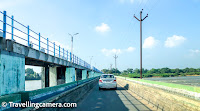


















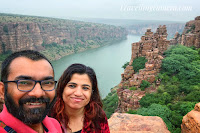

%20to%20see%20the%20Danish%20fort%20in%20Tamilnadu%20state%20of%20India-3.jpg)

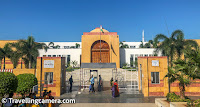





.jpg)
Comments